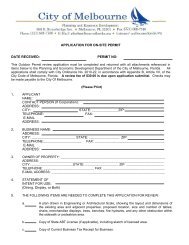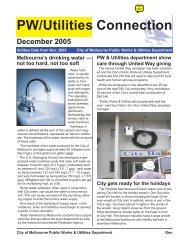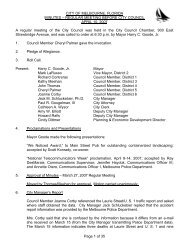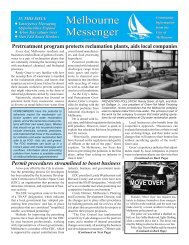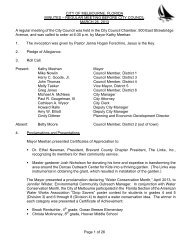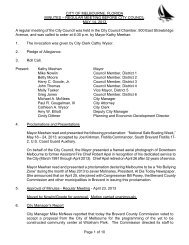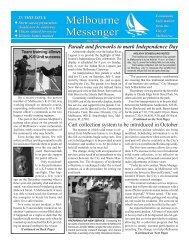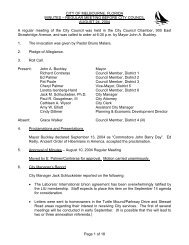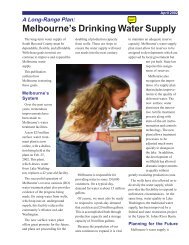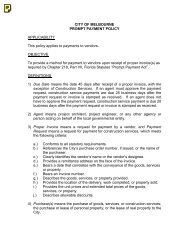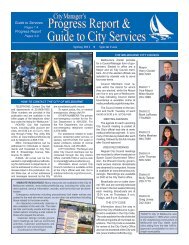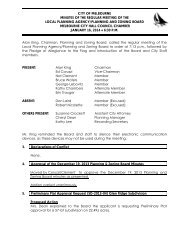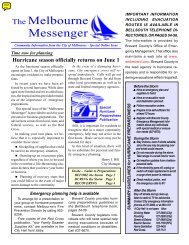Historic Guidelines - City of Melbourne, Florida
Historic Guidelines - City of Melbourne, Florida
Historic Guidelines - City of Melbourne, Florida
Create successful ePaper yourself
Turn your PDF publications into a flip-book with our unique Google optimized e-Paper software.
REHABILITATION AND ADDITIONS<br />
19<br />
Rehabilitation and Additions to Contributing Structures<br />
The key to a successful rehabilitation is maintaining the characteristic details and historic<br />
fabric <strong>of</strong> a building. However, a successful rehabilitation may also involve repair or replacement <strong>of</strong><br />
original building details or the introduction <strong>of</strong> new elements that can relate properly to the original<br />
components <strong>of</strong> the building and the neighborhood. This section recommends sensible rehabilitation<br />
treatments to ensure the typical elements <strong>of</strong> each style are preserved, as these elements contribute<br />
to the character <strong>of</strong> not only the building but also the neighborhood. Please note that for the purpose<br />
<strong>of</strong> “contributing structures” the term “should” as used within this document is intended to convey a<br />
suggestion or recommendation to the reader. It is not intended to communicate a requirement nor<br />
mandate. However, for “local designated” structures, these guidelines will be strictly enforced.<br />
The emphasis <strong>of</strong> this section is on rehabilitation, which is a compromise between remodeling,<br />
which has no sensitivity to the historic features <strong>of</strong> a building, and restoration, which is a more accurate<br />
but costly approach to repair, replacement, and maintenance. Buildings should not be made to look<br />
older or newer than they really are by using details from another style or period. This would alter both<br />
the building and the streetscape.<br />
Appropriate Rehabilitation<br />
The distinguishing original<br />
characteristics <strong>of</strong> an existing building,<br />
structure or site should be preserved.<br />
If replacement is necessary, the<br />
replacement feature should match the<br />
original feature in composition, color,<br />
texture, and other visual qualities. The<br />
application <strong>of</strong> non-traditional materials<br />
such as aluminum siding, vinyl siding,<br />
and metal frame windows (unless<br />
appropriate to the style) obscures<br />
the original character <strong>of</strong> the building<br />
and impacts the historic fabric <strong>of</strong> the<br />
neighborhood.<br />
When rehabilitating a building,<br />
an effort should be made to uncover<br />
previously encased or hidden finishes<br />
and details such as siding, stone,<br />
ornamental plaster or brick, and<br />
decorative structural elements such<br />
as pylons, beams and brackets. The<br />
encasing <strong>of</strong> original elements may in<br />
many cases lead to deterioration, and<br />
may detract from the building’s overall<br />
harmony within the neighborhood.<br />
The use <strong>of</strong> architectural elements and<br />
materials salvaged from demolition <strong>of</strong><br />
historic buildings is encouraged.<br />
Before<br />
After<br />
Inappropriate Modifications<br />
DRAFT<br />
Before<br />
After



